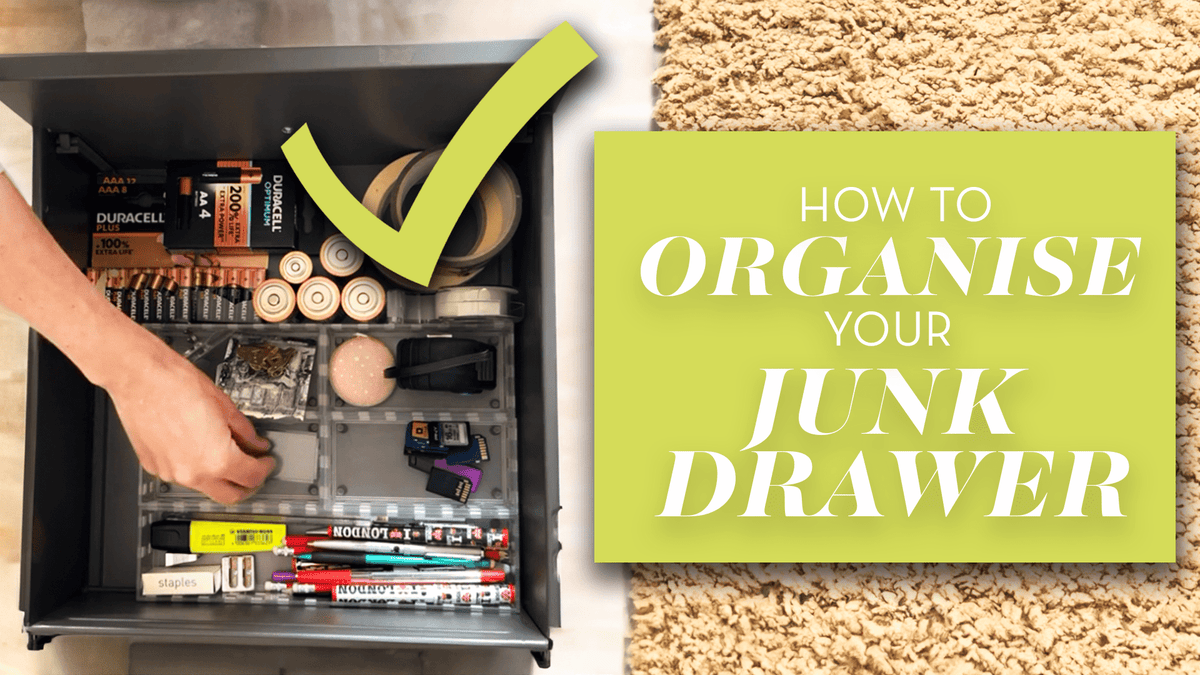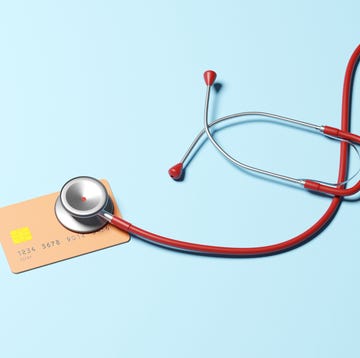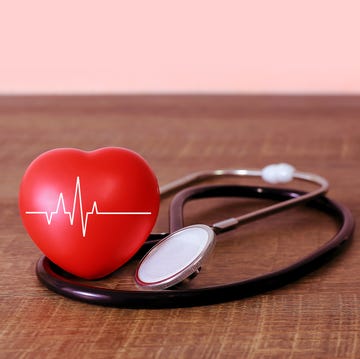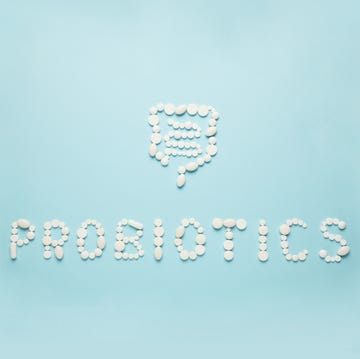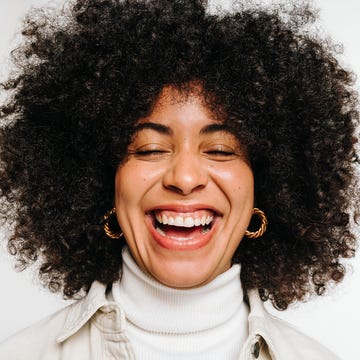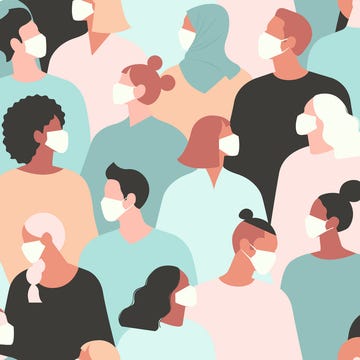If you've looked at your legs recently and noticed a few spots where your blood vessels are raised or darkened, you're not alone: Millions of people have varicose veins.
For such a common condition, it's surprising how little we know about it. What are they, anyway? 'Varicose veins are veins that become abnormally swollen, usually due to defective valves in the vein, abnormal valves in the vein, or abnormal venous pressures in the legs,' explains Dr. Michael Swann, a board-certified dermatologist. 'They are sometimes blue-ish in colour, protrude from the surface of the skin, and frequently have a winding or worm-like appearance.'
MORE: THIS IS THE BIGGEST INFLUENCE OVER WHETHER YOU GET VARICOSE VEINS
What's worse, many report pain associated with varicose veins. Luckily, there are treatments available and suggested lifestyle tweaks to help. Here's the pro-consulted rundown on what you can do about this pesky problem:
1. Compression stockings
Want to keep your varicose veins at bay? Talk to your doctor about getting compression stockings: hosiery that helps to increase circulation by applying pressure on the limbs. 'The best thing you can do to slow down the development of veins you already have — or to avoid varicose veins all together — is wearing compression stockings,' advises dermatologic surgeon Dr. Sabrina Fabi.
A good route for finding the right ones for you: Get a custom fit. 'It's key to find a good surgical supply shop that can measure and fit your compression stockings for you,' recommends board-certified dermatologist Dr. Kavita Mariwalla, who adds that her favourite brand is Sigvaris since they're 'very easy to put on and don't look like classic ugly compression stockings.'
MORE: EVERYTHING YOU NEED TO KNOW ABOUT THE MENOPAUSE
2. Tight clothes
Contrary to popular belief, tight clothes don't cause varicose veins.'Not only does tight clothing not contribute to varicose veins, they can be part of the solution,' says Dr. Swann. 'Although ideally eternal compression garments of medical grade start around 20mm of mercury, lighter pressures seen with spandex workout leggings or tights can be beneficial.' Hooray for yoga trousers!
3. Sclerotherapy
If compression stockings aren't helping, ask your doctor about other medical treatments, including sclerotherapy. 'Sclerotherapy is the process of injecting a sclerosant (liquid) into the veins, which causes them to collapse and go away,' explains Dr. Mariwalla. 'Lots of sclerosants are out there — I prefer glycerin, as this has a decreased risk of producing hyperpigmentation in the area afterward.' Six to eight weeks later, and with the diligent wearing of compression stockings for the first two weeks after treatment, your body clears up the vein and your skin is smoothed out.
An important thing to note is that while hypertonic saline is sometimes available as an alternative, Dr. Fabi seriously advises against it: 'Injecting hypertonic saline into your varicose veins is not medically approved for this indication — and although it's cheap, it can result in ulcerations and scarring.' Yikes, no thank you.
4. Endovenous laser treatment
For larger, bulging veins that typically run along the inner aspect of the thigh and calf, there's yet another treatment option. 'Endovenous laser treatment is a technique where a surgeon inserts a catheter into the large varicose vein and heats the lumen, or inside, of the vessel causing it to collapse. This is used primarily for large tortuous veins,' says Dr. Mariwalla.
5. Phlebectomy
For some cases, other treatments may be advisable. 'If the veins are truly bulging, in addition to laser closure of the great saphenous vein, which is like cutting down a tree trunk, we perform phlebectomies, which remove the small varicose veins on the calf,' explains Dr. Fabi. While this is a minimally invasive procedure, it is performed using either a scalpel or needle.
MORE: 10 EXERCISE HACKS FOR BUSY WOMEN
6. Healthy habits
Just as with all aspects of your health, your diet and exercise practices play into how quickly or slowly your varicose veins develop. While some things that can contribute can't be prevented, such as weak valves, which are genetic, and high progesterone, which can occur during pregnancy, Dr. Swann recommends adopting good general habits. 'Because the leg muscles can really help veins move blood back to the heart and relieve high leg vein pressures, movement is a great thing,' he says. 'Obesity causes increased venous pressure, so eating right and staying lean is ideal.'
That said, Dr. Mariwalla warns that running on hard surfaces, like the road or concrete, is also not great for your leg muscles. If running is your favourite form of exercise, talk to your doctor to determine ways to minimise the damage it does — or simply find fun new ways to get fit.
7. Proper posture
On top of eating right and working out, good posture could help, too — and that means no more crossing your legs while sitting. 'Crossing your legs habitually can be a problem,' advises Dr. Swann. 'I see a lot of women who have a patch of spider veins and some reticular veins commonly in a perfect circle where their kneecap habitually comes in contact with their calf.' If you're guilty of this habit, try to stay conscious and keep your legs side-by-side, not criss-crossed.
The takeaway:
While your varicose veins could be simply an aesthetic dilemma, you should talk to a doctor if you've noticed them. 'Anyone wanting to get treated should make sure their little veins aren't the sign of a bigger problem,' says Dr. Swann. For example, blue varicose veins could indicate that there's a 'true problem with a valve in the bigger vessels,' says Dr. Mariwalla.
MORE: THIS IS WHY OLDER WOMEN SHOULD BE WEIGHTLIFTING
(Via: Good Housekeeping USA)
Like this? Subscribe to the Good Housekeeping newsletter.

